By Robert St. Martin
 Los Angeles, CA (The Hollywood Times) 6/29/23 – Airing on PBS this week is an interesting documentary film Casa Susana (USA/France, 2022), by renowned French filmmaker Sébastien Lifshitz. The film premiered at the Venice Film Festival 2022 and was recently included in the lineup for San Francisco’s Frameline Film Festival in June 2023. During the 1950s, a group of closeted trans women and crossdressers found unexpected refuge in Casa Susanna, a remote house in the New York Catskills where they were able to freely express their authentic selves. During their short stay, these guests would do performances and photoshoots, lounge in clothes that they would otherwise only fantasize about wearing, and form an unlikely (and for some, lifesaving) community of kindred. Back in the 1950s, people didn’t really know the difference between being trans and being gay, whilst trans women, crossdressers and non-binary people were all lumped into one category, defined by their difference from the accepted norm. The bungalow camp was run by Susanna Valenti and her wife Marie, who also ran a wig store in town in Jewett, New York.
Los Angeles, CA (The Hollywood Times) 6/29/23 – Airing on PBS this week is an interesting documentary film Casa Susana (USA/France, 2022), by renowned French filmmaker Sébastien Lifshitz. The film premiered at the Venice Film Festival 2022 and was recently included in the lineup for San Francisco’s Frameline Film Festival in June 2023. During the 1950s, a group of closeted trans women and crossdressers found unexpected refuge in Casa Susanna, a remote house in the New York Catskills where they were able to freely express their authentic selves. During their short stay, these guests would do performances and photoshoots, lounge in clothes that they would otherwise only fantasize about wearing, and form an unlikely (and for some, lifesaving) community of kindred. Back in the 1950s, people didn’t really know the difference between being trans and being gay, whilst trans women, crossdressers and non-binary people were all lumped into one category, defined by their difference from the accepted norm. The bungalow camp was run by Susanna Valenti and her wife Marie, who also ran a wig store in town in Jewett, New York.
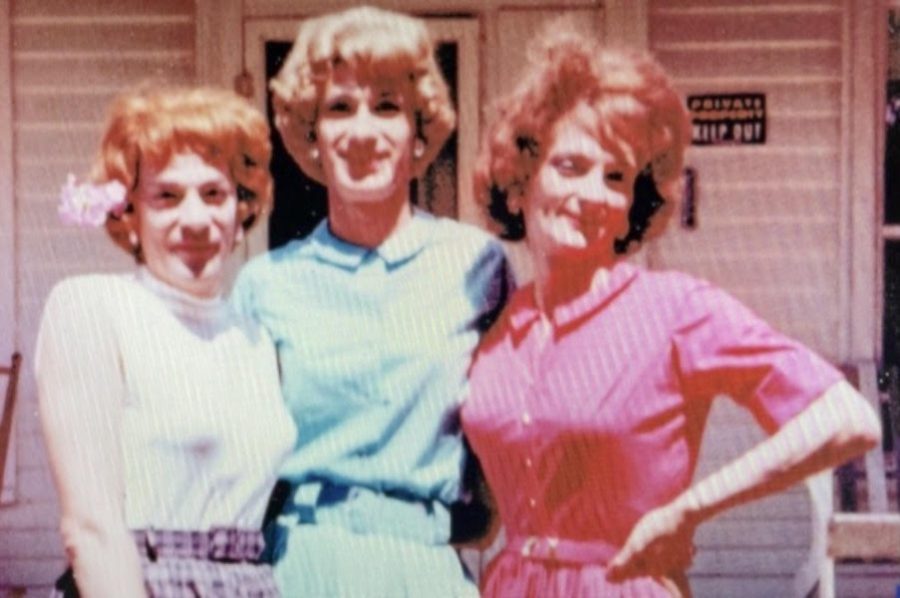 The buildings of Casa Susanna are still standing, buildings which trans women would travel to from all across the US just to get to spend a little time being themselves. There are still some of the original Casa Susanna attendees around who share their memories in this film. Octogenarian Katherine Cummings traveled all the way from Australia to revisit her old haunts and reflect on where life has taken her since. In the process, she reconnects with Diana Merry-Shapiro. Both have had complicated journeys to self-acceptance as women, Diana having had to shake off the prejudices of a strict religious childhood, but they seem utterly comfortable with themselves now, and the contrast is wonderful to see.
The buildings of Casa Susanna are still standing, buildings which trans women would travel to from all across the US just to get to spend a little time being themselves. There are still some of the original Casa Susanna attendees around who share their memories in this film. Octogenarian Katherine Cummings traveled all the way from Australia to revisit her old haunts and reflect on where life has taken her since. In the process, she reconnects with Diana Merry-Shapiro. Both have had complicated journeys to self-acceptance as women, Diana having had to shake off the prejudices of a strict religious childhood, but they seem utterly comfortable with themselves now, and the contrast is wonderful to see.
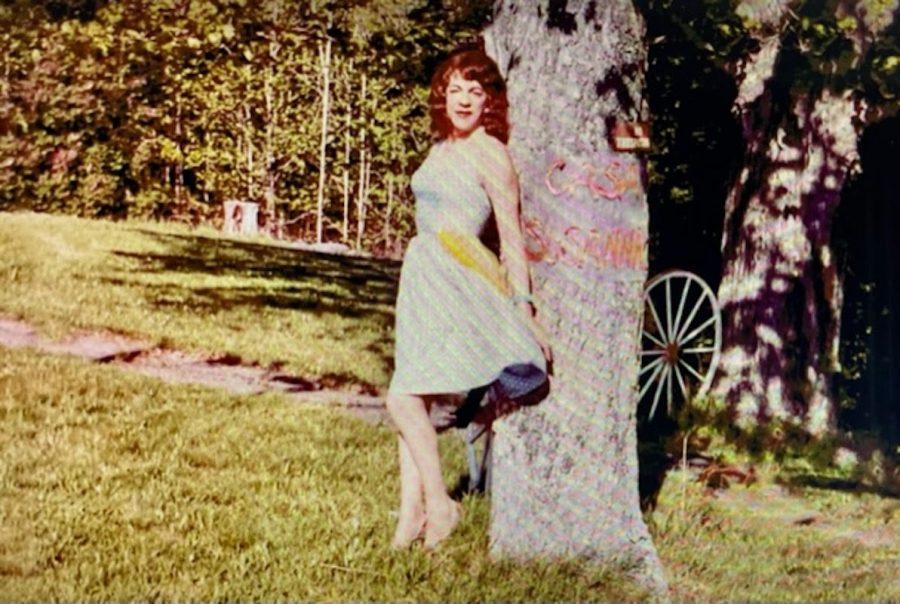 Some of the visitors to Casa Susanna included the pulp science fiction author Donald Wollheim, who is fondly remembered by daughter Betsy, who only learned the family secret on her mother’s deathbed. Over the course of the film, she talks about the complexity of her family relationships and how her perspective has changed as a result of that understanding. Joining her here is Maria’s grandson, Gregory Bagarozy, who reflects on his relationship with Susanna/Tito, whom he remembers as if they were two different people.
Some of the visitors to Casa Susanna included the pulp science fiction author Donald Wollheim, who is fondly remembered by daughter Betsy, who only learned the family secret on her mother’s deathbed. Over the course of the film, she talks about the complexity of her family relationships and how her perspective has changed as a result of that understanding. Joining her here is Maria’s grandson, Gregory Bagarozy, who reflects on his relationship with Susanna/Tito, whom he remembers as if they were two different people.
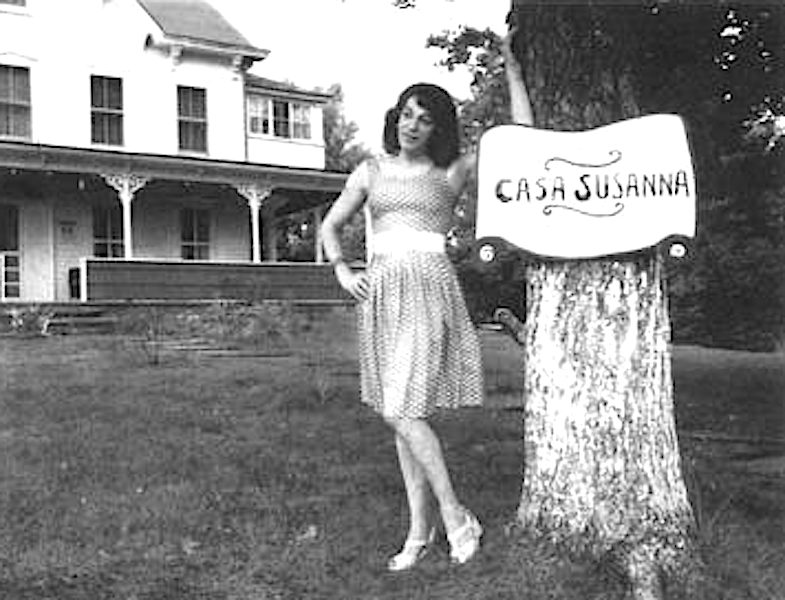 Sébastien Lifshitz’s film is introduced by a snippet from a gameshow of the period. Misty, a bank teller; Vicky, a cosmetician; Sonya, a hairdresser; and Simone, who works on window displays, sit at one side of a small room, elegantly dressed and smiling. “Each of our contestants is a man,” says the presenter, treating it as a shock revelation, but his body language tells us that he doesn’t wholly believe it, and there’s a certain tenderness about the way he engages with them. This is a healthy reminder that trans people have always existed and found ways of getting by in the world, and that there have always been other people able to see past the prejudices of the time. Most guests at Casa Susanna were married, and considered themselves heterosexual men who enjoyed cross-dressing, but many others later identified as transgender and lived out their lives as women, including Virginia Prince and Susanna herself.
Sébastien Lifshitz’s film is introduced by a snippet from a gameshow of the period. Misty, a bank teller; Vicky, a cosmetician; Sonya, a hairdresser; and Simone, who works on window displays, sit at one side of a small room, elegantly dressed and smiling. “Each of our contestants is a man,” says the presenter, treating it as a shock revelation, but his body language tells us that he doesn’t wholly believe it, and there’s a certain tenderness about the way he engages with them. This is a healthy reminder that trans people have always existed and found ways of getting by in the world, and that there have always been other people able to see past the prejudices of the time. Most guests at Casa Susanna were married, and considered themselves heterosexual men who enjoyed cross-dressing, but many others later identified as transgender and lived out their lives as women, including Virginia Prince and Susanna herself.
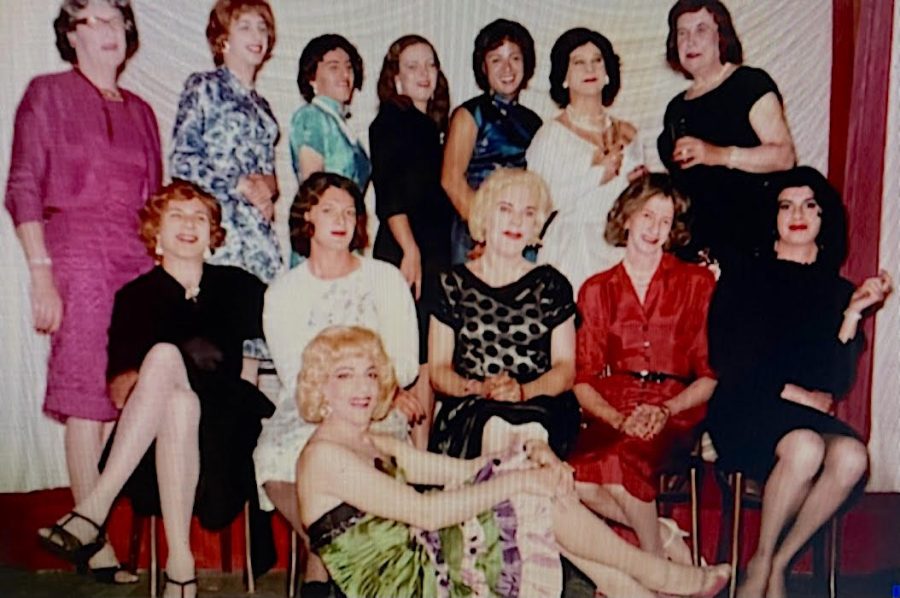 Casa Susanna also offered photography, having appointed one of their guests, Andrea Susan, as their official photographer. Andrea took many photographs of her fellow guests with a film camera and developed them at home. Andrea put the negatives in the possession of her photography mentor Dick, who had gifted her photography equipment. However, when Dick later married, these negatives were thrown away, eventually making their way to a Manhattan flea market in the mid 2000s. There, they were found by Robert Swope, “a gentle punk rocker turned furniture dealer,” who bought every photograph he could find and published them in a book with his partner Michel Hurst. The release of the book Casa Susanna, fifty years after many of the photographs themselves were taken, led to many former attendees of Casa Susanna coming forward to share their experiences, allowing Casa Susanna to be documented. The book Casa Susanna, based on a collection of photographs from the site, inspired the Tony-nominated play Casa Valentina by Harvey Fierstein.
Casa Susanna also offered photography, having appointed one of their guests, Andrea Susan, as their official photographer. Andrea took many photographs of her fellow guests with a film camera and developed them at home. Andrea put the negatives in the possession of her photography mentor Dick, who had gifted her photography equipment. However, when Dick later married, these negatives were thrown away, eventually making their way to a Manhattan flea market in the mid 2000s. There, they were found by Robert Swope, “a gentle punk rocker turned furniture dealer,” who bought every photograph he could find and published them in a book with his partner Michel Hurst. The release of the book Casa Susanna, fifty years after many of the photographs themselves were taken, led to many former attendees of Casa Susanna coming forward to share their experiences, allowing Casa Susanna to be documented. The book Casa Susanna, based on a collection of photographs from the site, inspired the Tony-nominated play Casa Valentina by Harvey Fierstein.
Casa Susanna shows the relentlessly affirming journey that these women (and the world as a whole) have gone through since their days at the Catskills. Through the film they are able to reminisce about the magic that took place in the isolation of that house, away from any societal expectations or judgment.
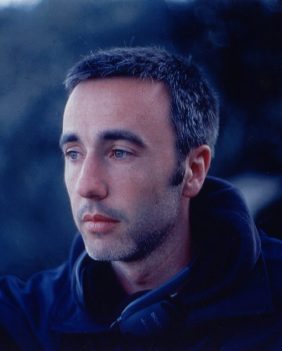 French director Sébastien Lifshitz’s work involves LBGTQ+ themes. He first came to my attention with his Presque rien (U.S. title Come Undone), a 2000 French-Belgian romantic drama about a stormy holiday romance between two male teenagers, played by Jérémie Elkaïm and Stéphane Rideau, famous for his role in André Téchiné’s Wild Reeds. Lifshifz’s 2004 film, Wild Side, involves several narratives, some told forward and some backward, about a transgender prostitute. That film garnered Lifshifz his first Teddy Award at the Berlin International Film Festival. More recently he won a Teddy for Best Documentary Film in 2013 for Bambi, a documentary profile of transgender French entertainer Marie-Pierre Pruvot.
French director Sébastien Lifshitz’s work involves LBGTQ+ themes. He first came to my attention with his Presque rien (U.S. title Come Undone), a 2000 French-Belgian romantic drama about a stormy holiday romance between two male teenagers, played by Jérémie Elkaïm and Stéphane Rideau, famous for his role in André Téchiné’s Wild Reeds. Lifshifz’s 2004 film, Wild Side, involves several narratives, some told forward and some backward, about a transgender prostitute. That film garnered Lifshifz his first Teddy Award at the Berlin International Film Festival. More recently he won a Teddy for Best Documentary Film in 2013 for Bambi, a documentary profile of transgender French entertainer Marie-Pierre Pruvot.




